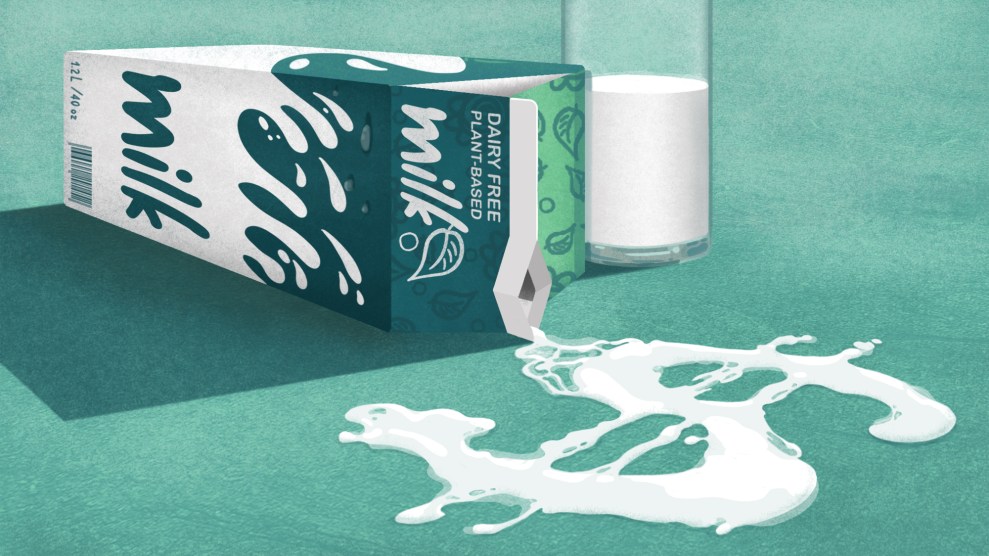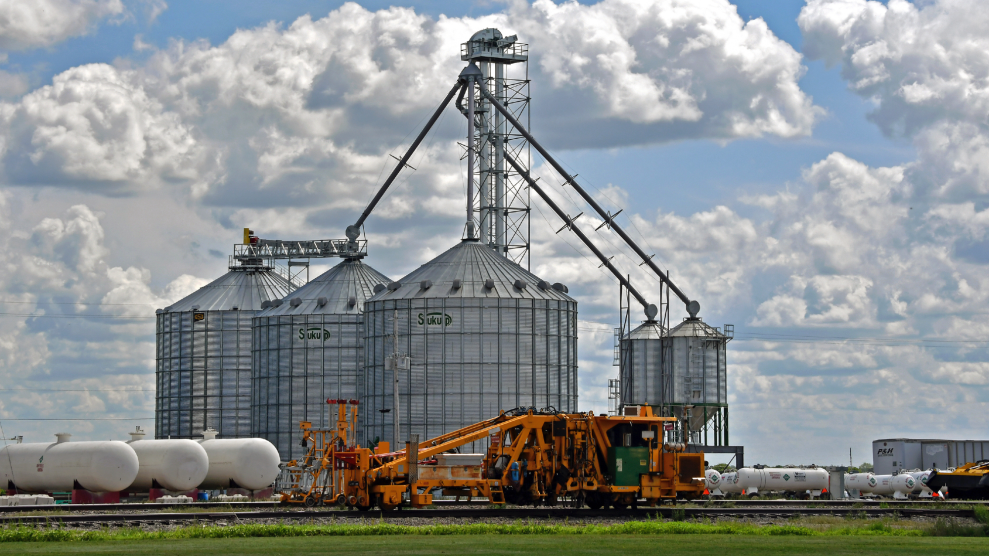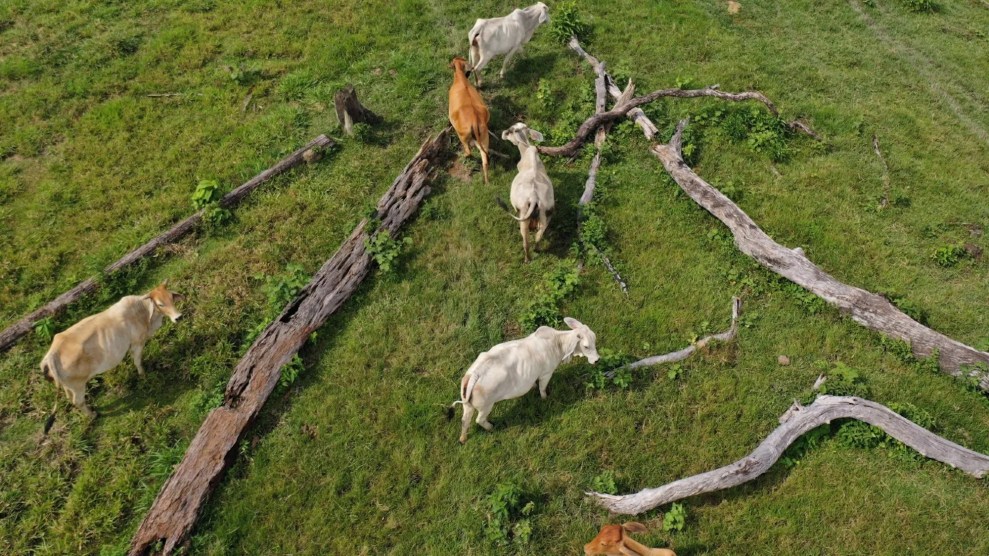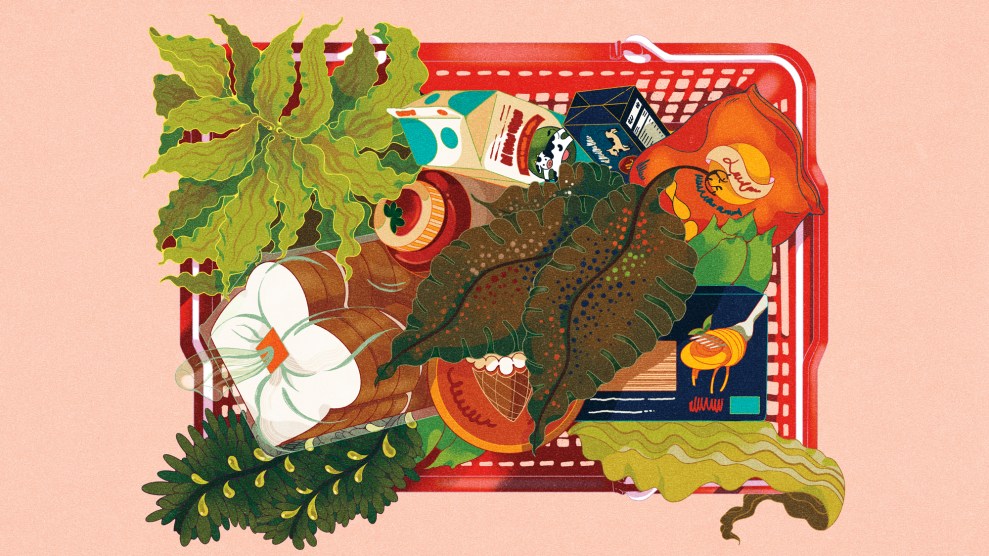The revised and upgraded unemployment figures released on Friday were nothing short of staggering: almost two million jobs lost in the past three months as the official unemployment rate rose to a quarter-century high of 8.1%. Nearly three million Americans are now officially unemployed for six months or more, while another 8.6 million are “working part time because they cannot find full-time employment.” Just the previous day, the government released figures showing, not surprisingly, that food stamp recipients had also soared by another 700,000 in February—651,000 jobs had been lost that same month—to a record total of 31.8 million.
Food stamps may be the major government bailout program against hunger, but most bailout efforts by the Obama administration and its predecessor have been focused on pouring multi-billions repeatedly into ever more failing financial institutions, which, as economist Joseph Stiglitz writes, “years of reckless behavior, including bad lending and gambling with derivatives, have left [them], in effect, bankrupt.” This includes, of course, $45 billion siphoned into Citigroup, whose stock hit the one-dollar mark just days ago, and into that black-hole-of-a-disaster, the global insurance company A.I.G., which got another $30 billion last week, bringing its grand bailout total (to date) to $163 billion.
Money-mad bankers, who helped put millions out of work and start a cascading global financial crisis that seems without end, evidently feel no shame as they receive millions in bonuses while milking their banks and the government for everything they’re worth. On the other hand, increasing numbers of Americans feel deep shame, when they shouldn’t, because they have to resort to the nation’s private system of food banks and other free food outlets once they find they can’t stock their refrigerators and cupboards adequately enough to feed themselves and their children.
This is a nightmare that Nick Turse—in the fourth installment of his Tough Times series for TomDispatch on American economic hardship—captures as he reports on what’s happening to food banks nationwide. It’s worth keeping in mind that, under the pressure of massive need and desperation, banks like Citigroup and Wells Fargo aren’t the only ones that could fail and that it’s ordinary Americans who really need, and deserve, the bailing out. Tom
Breaking the Banks
The Struggle to Feed America’s Nouveau Needy
By Nick Turse
The message is simple. Ever more Americans need food they can’t afford. As tough economic times take their toll, increasing numbers of Americans are on tightened budgets and, in some cases, facing outright hunger. As a result, they may be learning a lot more about food banks and soup kitchens than most of them ever wanted to know.
In recent interviews with TomDispatch.com, representatives from food banks—the non-profit organizations that distribute groceries to those in need via food pantries, shelters, and soup kitchens—expressed alarm at the recent surge in need all across the country. At the same time, most stated that, however counterintuitive it might seem, financial contributions to their organizations are actually on the rise. So, too, are food prices, however—and donations, unfortunately, are not keeping up with demand.
Food bank representatives agree on one thing: the need for their services is spiking in a way none of them can recall. Again and again, they emphasize that lines at food pantries are growing longer, seemingly by the month, and that those in line are younger and often more middle class than ever before.
Families who just months ago didn’t even know what a food bank was and would never have considered visiting a food pantry now have far more intimate knowledge of both. Embarrassed to approach institutions that they previously identified with the poor and indigent, many, say food bank officials, are also waiting far too long to seek aid. Other formerly middle class Americans who have never dealt with, or even thought about, food insecurity before simply don’t know whom to call or where to turn.
These points echo a December 2008 survey conducted by Feeding America, a national hunger-relief charity. Its network of more than 200 food banks in all 50 states distributes more than two billion pounds of donated groceries annually to 63,000 local charitable agencies. Its survey found that, of 160 food banks, 99.4% of them reported seeing more first-time users in 2008.
For America’s food banks this has meant one thing: that they, too, are needier. They need ever more fresh food, non-perishable food, and non-food items like cleaning products and toiletries from wholesalers, retailers, food distributors, corporations, charities, government agencies, local farms, and individual donors. They need ever more storage and freezer space. They need ever more volunteers. They need ever more food that can be made available on appointed distribution days at food pantries. And they need ever more emergency food supplies, available on demand for people who suddenly realize that they are hungry and out of options, possibly for the first time in their lives.
The Face of Hunger Today
“Hunger does not discriminate, but the face of the hungry is growing younger,” says Stanley Bray of the St. Louis Area Foodbank, which distributes food to more than 500 agencies, including food pantries, soup kitchens, shelters, and emergency food programs in 14 counties in eastern Missouri and 12 counties in southwestern Illinois. Bray’s organization has seen a 15% increase in need just since October 2008. Thirty to forty percent of that 15%, he says, are first-time clients. “Typically, those who would have volunteered at the Foodbank are now recipients of food at local pantries,” he notes.
Even as Americans who once might have donated food or money now find themselves in need, people still have the urge to help as best they can. At one West Coast food bank, a representative told me of a man who recently came in with a proposition. He needed six weeks of food assistance while he was putting together the money to travel across country and move back in with his parents. Until then, he suggested, he would work for the food bank to pay his way.
“I must say that we are amazed and touched by the attitude of our community. From large local financial services [wealth management] companies, to the local Rotaries, schools, small businesses, and countless individuals—everybody seems to be sharing what they can,” notes Iris Valanti of the Greater Pittsburgh Community Food Bank. “Unlike the squabbling going on in Washington, people out here in real life are trying to pull together and do what they can.”
But that communal spirit can only take food banks so far, given the troubling trends on the horizon. According to Valanti, large foundations are reviewing their “decimated portfolios” and trimming donations, leaving organizations like hers wondering what the future will bring. In fact, the Greater Pittsburgh Community Food Bank’s subsidiaries are already struggling to obtain needed grants to secure new freezers to store food for the increasing number of nouveau needy. At the same time, she points out, food donations are actually down in her area, while the organization’s food purchases have increased by an astonishing 560% in the last two years.
Valanti spelled out the enormity of the problem: “Fall quarter 2008 saw a 44% decrease in donated product we get through our national network partner Feeding America… The other trend was skyrocketing food prices. Our wholesale cost for a case of pasta, for instance, has risen 88% since 2006.”
According to Cindy Stevens of the Community Food Bank of Eastern Oklahoma, demand for assistance began its current upswing after a major ice storm knocked out power in much of the area in December 2007. Food in refrigerators spoiled and many Oklahomans in the area were prevented from working, and thus from receiving paychecks. That led to the first “slight increase” in need, followed by a major jump when gas prices soared in the summer of 2008. Even though gas prices have fallen since, the economy has melted down with them.
“Our agencies report as much as a 40% increase in the number of people coming to them for assistance,” she notes. Like other food assistance providers nationwide, her food bank has observed a clear shift in demographics. “Our agencies are reporting a change in clientele. Many of the people who are coming to them have never had to seek assistance before. Many of them have jobs or have just lost a job.”
West Coast Woes
The San Diego Food Bank, which distributes groceries to 300 soup kitchens, senior centers, food pantries, churches, and other allied nonprofits in sprawling San Diego County, is facing similar marked increases in need. From December 2007 to December 2008, the number of people served by its USDA-funded Emergency Food Assistance Program, which aids low income people via 91 distribution sites, jumped from 37,302 to 65,663—a 76% increase. “It’s unprecedented,” says the Food Bank’s Chris Carter. “We’re seeing many more middle-class families coming in. I met a couple at one of our distributions, they have a mortgage and two car payments. They’ve both been laid off. The first thing to go is the food budget.”
It can take several months for food stamps to kick in after they’ve been applied for, and, as Carter points out, “a lot of people don’t have a couple of months. They need food immediately, so they’re coming directly to us. We’re seeing a dramatic increase in demand for food assistance across the board.”
In some places, people need to wait for specific distribution days to get help from a food pantry. In San Diego, the needy don’t have that worry; neither do people in Oakland, California, where the Alameda County Community Food Bank operates an Emergency Food Helpline. With just a phone call, those in dire need can receive food at a local pantry on the very day they dial. In 13 years, the Bank’s help line had received more than 1,500 calls a month only twice. In 2008, every month topped the 1,500 mark. For the last six months, the average has been more than 2,000 a month and is soon expected to break the 2,500-call barrier.
In the last three months of 2008, according to Brian Higgins, the Food Bank’s Communications Manager, “We saw a 45% spike over the exact same period in 2007, which was, in itself, a record breaking year.” Add those numbers to the 40,000 people fed each week by the organization which distributes about 15 million pounds of food per year, while keeping in mind that we’re only talking about one small city, and you begin to get a sense of the enormity of the crisis bearing down on the country.
Oakland is a poor city and many there have long experienced privation. Not surprisingly, the current economic crisis has hit its population hard. In East Oakland, the city’s neediest area, people line up each Friday at the Columbian Gardens food pantry in anticipation of a regular delivery of groceries from the county food bank. “Those lines have gotten longer and longer and longer,” says Higgins. Phone calls for emergency food are increasing exponentially as well. Two years ago, the staff at Columbian Gardens used to distribute four to five emergency bags of staples, including canned goods and pasta, each day. Now, on a normal day, it’s 25 to 30 bags.
Nor is the pain confined to perennially hard-hit East Oakland. The whole city is suffering. Next door to the Alameda County Community Food Bank, for example, a brand new $35 million Toyota dealership—the largest in all of Northern California—was built from scratch on an empty lot. “It was open about eight weeks before it closed,” comments Higgins—and it’s just one of numerous local businesses shutting down.
As a result, Oakland, historically saddled with the most impoverished senior population in all of California, is seeing new trends that the Food Bank’s workers find chilling. Higgins notes that the population they serve now includes “more and more young people and working families. We’re seeing people who made really decent money a couple years ago in real estate and other commission fields, who are down to nothing. They’re having to make that call for first time.”
Unfortunately, many put off calling for assistance for as long as possible. “People who work on our emergency food help-lines,” he continues, “say there’s a universal embarrassment about the calls they’re getting now.” Phone operators reassure clients that the food bank is there for that very reason, but shame and stigma have led to increased privation. “It really delays people calling.”
At the Food Bank of Contra Costa and Solano, California, Lisa Sherrill has noted the same kind of spike in need. “Overall, we are serving 20% more people over two years ago,” she wrote in a recent email. At some of its 29 Food Assistance Program sites, where boxes of fresh produce, bread, and other staples are handed out, demand is increasing by 5-10% a month.
Donated funds are on the rise, but they can’t fully compensate for the surge in new assistance seekers. “There are many people in our Food Assistance lines that have never had to ask for food before,” notes Sherrill. “Last week at a site in Antioch, we spoke with a man who has a master’s [degree] in engineering, lost his job, and is having a hard time finding work because there aren’t many opportunities, and what he can find he is being told he is overqualified for.”
Alaska has fared better than many states. Lacking massive waves of home foreclosures and a startlingly high unemployment rate, it has been buffered from the worst of the hardships seen elsewhere. Still, the arrival of tough economic times was plainly visible last fall at “Thanksgiving Blessing,” an annual holiday grocery distribution program spearheaded by the Food Bank of Alaska and held at eight locations in Anchorage.
In 2008, according to Marleah LaBelle, communications manager for the food bank, 5,900 families turned out for Thanksgiving Blessing, a 42.7% increase over the previous year. “If you factor the 5,900 families, with an average family size of four, and the total population of Anchorage 260,283—that is roughly 10% of the population or one in ten families,” LaBelle notes. A similar December program, “Neighborhood GIFT” (which also includes toy distribution) saw a 30% spike in turnout compared to 2007. “I saw people that I knew personally at both of the holiday food distributions, and they are people I had not previously considered to be ‘low income,'” she adds.
Unfortunately, the holiday season spike proved no aberration in Anchorage. The food bank’s affiliates have been reporting, across the board, 30-50% increases in people visiting their soup kitchens and food pantries. For instance, the number of clients at the Valley Open Bible Fellowship food pantry in Big Lake, Alaska, has doubled recently.
As elsewhere, monetary donations have also increased for the Food Bank of Alaska, but ever less retail food is now being donated—a worrisome trend nationally in light of increased need. “Something that has been striking to nearly everyone at Food Bank of Alaska is how quickly the food comes off the shelves in the warehouse. As soon as donated food gets sorted, it almost instantly gets picked up,” LeBelle wrote in a recent email.
What’s Ahead for the Nouveau Needy?
Tens of millions of Americans were already suffering from hunger and food insecurity before the current depression. In fact, in 2006, the U.S. Department of Agriculture estimated that 35.5 million Americans were “food insecure.” Now, however, those numbers are bound to swell, thanks to the growing ranks of America’s nouveau needy. “It’s the new face of hunger for us. Before we primarily served the low-income population, the working poor, as people call them,” says the San Diego Food Bank’s Chris Carter. “Now middle class families who were in retail jobs, construction, the real estate industry… are finding themselves in our lines. Some of these people are those who would have donated food to us before, who would never dream they’d be in one of our food lines, and now they need help.”
From his conversations with clients at the food bank’s distribution sites, Carter sees bleak times ahead, especially for the staggering number of people who have, as a last resort, been maxing out their credit cards. “We’ve seen the credit crunch on Wall Street and the ripple effect that it’s had on more vulnerable industries across the country. I think there’s going to be a credit tightening at the consumer level. When that happens we’re going to see a huge surge in demand,” he said recently. “This is going to get worse before it gets better.”
Such prospects will spell trouble in the years ahead. The Federal government is now pouring hundreds of billions of dollars into bailing out broken banks. If hunger and need continue to skyrocket, food banks may be the next banks to break. Who will bail them out?
Nick Turse is the associate editor of TomDispatch.com. His work has appeared in many publications, including the Los Angeles Times, the Nation, In These Times, and regularly at TomDispatch. A paperback edition of his book, The Complex: How the Military Invades Our Everyday Lives (Metropolitan Books), an exploration of the new military-corporate complex in America, has just been published. His website is Nick Turse.com.
[Note: The three previous pieces in Nick Turse’s ongoing Tough Times series of reports on American economic hardship are: “The Rising Body Count on Main Street, The Human Fallout from the Financial Crisis,” “Meltdown Madness, The Human Costs of the Economic Crisis,” and “Tough Times in Troubled Towns, America’s Municipal Meltdowns.”]
Copyright 2009 Nick Turse








